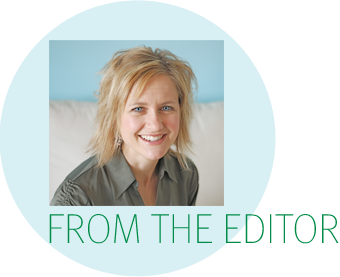PEN eNews 2(2) August 2012
PEN
® eNews is a monthly e-newsletter shared with the global PEN Community and created to help dietitians position themselves as leaders in evidence-based nutrition practice. In addition, users of the PEN System will find articles on the new evidence, resources and features available and how to maximize one's use of PEN.

Highlights from #EBdiet
Did you want to attend the 2012 DC Conference but could not go? This past June, PEN & its followers used the hashtag #EBdiet to share evidence presented at the Dietitians of Canada national conference. In 140 characters or less, we tweeted 71 times, highlighting evidence shared from a diverse array of conference sessions. There was sharing of information and virtual conversations between conference delegates at the same session and those participating virtually. One virtual follower said they were glued to their screen watching the #EBdiet tweets. If you weren’t there, you could participate by retweeting (we had 59 retweets), asking questions and sharing your opinion. Conference reporting with #EBdiet allowed dietitians to share their credible and expert knowledge in real-time. Continue the conversation about evidence-based dietetic practice - follow us @pennutrition.
We have a diverse line-up of articles in PEN eNews 2(2).
Social Media: Dialling into the Digital Age Part II is the second in a six-part series offering you tips to engage in social media with confidence. Wondering what new developments are in the works for PEN? Read
Coming Soon! PEN Practice Toolkits – What we learned from focus group testing. The previous two issues of PEN eNews included articles on
systematic reviews.
Answering practice-based questions: demystifying systematic reviews showcases two dietitians’ learnings from conducting a systematic literature review. The compelling story behind the Cochrane logo shares the impact that synthesized literature had on the rates of premature birth. This and more in eNews 2(2).
Kristyn Hall MSc, RD
Editor, PEN eNews
PEN eNews may contain links to other external websites. Dietitians of Canada, The British Dietetic Association, the Dietitians Association of Australia and Dietitians of New Zealand are not responsible for the privacy practices or the content of such external websites and do not endorse the content, products or services on other websites.
What's New in PEN
As of July 31, PEN has 167 Knowledge Pathways, 1053 Practice Questions and 2297 Tools and Resources! Come and see what we have for you! Here is a list of our updated content in PEN, including updated knowledge pathways, new practice questions, updated practice questions, new professional tools, updated professional tools, and new handouts available:
New Knowledge Pathways
Updated Knowledge Pathways
New Practice Questions
Updated Practice Questions
New Professional Tools
Updated Professional Tools
Third Party Consumer Tools
How do I... find my way around Pen?
Written by Lisa Koo, RD PEN Quality Assistant

The other day I received a call from a dietitian who was looking for the printed ADA / DC Manual of Clinical Dietetics. Since September 2005 the Manual of Clinical Dietetics has been replaced with PEN – Practice-based Evidence in Nutrition, a dynamic resource that allows readers to receive timely updates to evidence-based dietetic information.
A concern I have heard is that some people find it difficult to find the specific information they are looking for in PEN and may be reluctant to sign up for PEN again. In PEN, there is a place for everything! Here are three tips to help you become familiar with PEN (especially if you haven’t logged on in awhile):
1) Search using PEN’s search engine. Since PEN was first launched in 2005, PENs search engine has been rebuilt to be more effective at detecting keywords and information that you are looking for. PEN’s website was re-designed with a new layout which presents the information in a more user-friendly way.
2) Look at our newly designed homepage. Once you have logged into PEN, the homepage now has sections where you can access the PEN Handout Collections; Featured PEN Tools and Resources; What’s New [in PEN]; Key/Useful/Quick Links to alerts and recalls, PEN Terminology, PEN Writer’s Guide, as well as New Evidence in PEN linking you to new knowledge pathway content, new tools and resources, and news-making evidence. News-making evidence is a new area on PEN that features newsworthy nutrition topics and the evidence in PEN related to that particular topic.
3)
Watch our new PEN Orientation Tutorials - If you are brand new to PEN or haven’t been on the site for a while, you can familiarize yourself with PEN’s site by watching the four
orientation tutorials which have also been updated to reflect the new design. At only 10 minutes each, it is an efficient way to get to know PEN features.
The more you use PEN the easier it is to find information.
Sign up for a free 15-day trial to try out PEN and see what the new PEN website is like for yourself. If you have any questions about the information in this article, please email me at lisa.koo@dietitians.ca.
The “P” word… and we don’t mean PEN
Deans have resigned, journalists have been fired and students expelled when it has been discovered that they plagiarized.

Plagiarize: “to take (ideas, writings, etc.) from (another) and pass them off as one’s own”; literary theft (1).
We all probably think we have a pretty good sense of what plagiarism is and that it is wrong. But we also know of high profile examples where seemingly ethical, astute professionals are revealed to have borrowed the ideas of others without adequate attribution to the source of the ideas. Our electronic world makes it easy to deliberately or inadvertently plagiarize. It is simple to see how it can inadvertently occur. A busy professional or student copies and pastes information into a document with the intention of summarizing the material in his or her own words. She/he does reword the text, only to feel a few days later that it does not flow correctly, and inadvertently changes the wording back to that written in the original document. A few days and many thoughts later, the intent to summarize is forgotten and the plagiarized material is now part of the document.
A recent article in Nature described how publishers of scientific journals are using software programs to scan submitted articles to identify “identical or paraphrased chunks of text that appear in previously published articles” (2). Many universities are using this technology for assignments and for theses and dissertations. As with any new “diagnostic test” it isn’t clear if plagiarism is more common these days or is it that we simply have better ways of finding it. What is important to note is that with extensive use of this type of software, publishers will be able to accurately measure the extent of plagiarism including the most common types. An editorial (3) posted in response to the Nature article urged enhanced mentoring and education related to publication ethics to prevent rather than merely police plagiarism.
As the PEN service synthesizes and grades evidence for busy practitioners, our pathway authors are always summarizing and appraising the work of others. We don’t often find plagiarized material in content submitted for publication for PEN. But we do come across it. It is usually material that is cited, but does not have quotation marks to indicate the wording is the same as in the reference.
The PEN team takes publication ethics seriously and endeavors to ensure that the correct attribution of ideas and citation of the work of others is reflected in our database. We’ve created
PEN Plagiarism Guidelines (see Appendix 11) to assist our authors with understanding the different types of plagiarism and the steps necessary to avoid inadvertently plagiarizing the work of others. When signing their writing contract with PEN, authors pledge not to violate the intellectual property rights of others.
References available upon request
Written by Jayne Thirsk RD, PhD, FDC, Director of Practice-based Evidence in Nutrition
The compelling story behind the Cochrane logo
It is recognized throughout the world and symbolizes the power of systematically pooling and analyzing data from multiple randomized control trials (RCTs). Within the Cochrane logo, lies a powerful story. Many will recognize the forest plot presented between a “C” and an inverse “C” but you may not be aware that the forest plot represents actual data.
As early as 1972, physicians in New Zealand proposed that giving corticosteroids to pregnant women at risk of delivering prematurely could reduce the incidence of premature delivery and the morbidity and infant mortality that is associated with it. Seven trials were conducted between 1972 and 1981 but the findings were mixed and the administration of corticosteroids in this population was not adopted. In 1989 the data from these trials was pooled and systematically analyzed and it clearly demonstrated that corticosteroids reduced the risk of premature birth by as much as 30-50%. It is estimated that because of this delay in adopting this inexpensive treatment, tens of thousands of babies suffered the effects of premature birth or died as a result. As summarized by the Cochrane Collaboration: “This is just one of many examples of the human costs resulting from failure to perform systematic, up-to-date reviews of RCTs of health care.” (1)
PEN uses Cochrane reviews and other high quality reviews to inform the content of PEN.
For more information about the approaches we use in distilling the evidence to help inform your practice, see the PEN Writer’s Guide.
Cochrane logo is trademarked by the Cochrane Collaboration.
Written by Jayne Thirsk RD PhD FDC, PEN Director
Answering practice-based questions: demystifying systematic reviews
Have you ever considered using a systematic literature review to answer some of your practice-based questions? Not sure where to start? We were in the same boat when we agreed to precept a systematic literature review for two dietetic interns from the Northern Ontario Dietetic Internship Program. We used the PEN Writers Guide as a primary resource to help us with this project. Here are three key learnings from our systematic review:
A systematic review is an examination of existing literature that addresses a focused question, includes a comprehensive, pre-planned literature search strategy, appraises the quality of studies, and reports the findings in a systematic manner.
1) The research question needs to be clearly defined to best direct your search terms and strategy. We used the
PICO format to help define our question. PICO stands for population, intervention, comparison and outcome. Our question was:
2) There are defined steps to follow when conducting a systematic literature review. After we defined our question, we followed the following steps to complete our review:
- Select key search terms
- Identify study inclusion and exclusion criteria
- Select databases for searching
- Consider methods of identifying pertinent grey literature (such as reports, unpublished research or thesis)
- Save and record the search strategy and references
- Choose an evidence-grading checklist. We chose the checklist from PEN (PEN Writer's Guide, see Appendix 2) to assess the level of evidence of each study because we wanted a resource that was pertinent to dietitians.
3) There are excellent and accessible resources online to help conduct systematic literature reviews. Some resources we found useful included:
While it was a time-consuming process, completing a systematic literature review allowed us to efficiently identify and acquire all relevant literature to help answer our practice-based question.
Written by Teri-Lynn Marcoux RD, CDE and Kerri Loney RD, MEd
Written by
Beth Armour, PDt, MEd, PEN Content Manager
Conference Reporting: Setting up your conference for tweeting
Part I of this article series, Conference reporting in 2012 – the ways they are a changin’! provided guidance on how to use social media professionally for conference reporting. Part II describes social media activity ideas to consider for your next conference.
Have a conference coming up? Wondering how you might use social media for conference reporting?
Some activities associations might include:
 developing a conference hashtag e.g. #EBdiet or #ICD2012 so that Twitter tweets related to a topic or conference can easily be found during the time of conference. Be sure to promote these in advance so conference delegates and your social media audience know what hashtags to use and follow. Hashtags can be searched in Twitter but unless you have set up an archive system before hand, they are only available for 10 days after their last use. For more information on this, see the article #PHDCHAT – Thoughts on Twitter Methodologies (& an Experiment in Open, Collaborative Paper Writing.
developing a conference hashtag e.g. #EBdiet or #ICD2012 so that Twitter tweets related to a topic or conference can easily be found during the time of conference. Be sure to promote these in advance so conference delegates and your social media audience know what hashtags to use and follow. Hashtags can be searched in Twitter but unless you have set up an archive system before hand, they are only available for 10 days after their last use. For more information on this, see the article #PHDCHAT – Thoughts on Twitter Methodologies (& an Experiment in Open, Collaborative Paper Writing.- setting up a specific social network page (ex: Facebook event, Pinterest board) for conference registrants. This could facilitate interactions amongst attendees including sharing information about speakers, the venue, things to do and see outside of conference activities. Even people who aren’t at the conference can choose to follow along and see photos and video clips in almost real-time. This page might be set up prior to the conference and continue to be active after the conference. Conference sites can provide up-to-date information on confirmed speakers, program changes, social activities etc. in order to stir up some pre-conference hype. One can add their Facebook feed right to the conference website.
- having a social media session or event at the conference inviting all their social media followers to attend to meet face-to-face and perhaps have a special speaker / presentation
- Facebook might also be used to set up post- conference polls to help provide feedback on speakers and the conference in general
You and your colleagues can choose to do your own pre-conference planning by downloading an App called
Foursquare which enables your mobile GPS system to allow you to see where your colleagues are in the conference convention center.
Conferences will vary in how the hosting association sets up for social media activities. Most will choose to start into it slowly, as with all social media, there is an expectation to receive a timely response. People in the association who are responsible for social media may be tied up with other conference activities so it is important to consider organizational capacity to monitor social media at conferences.
What is a hashtag?
The # symbol, called a hashtag is used to highlight a key word or topic in a tweet (used in Twitter). Clicking on a hash-tagged word in any tweet shows you all other tweets that used the same hashtag. Some popular nutrition hashtags include #RDchat , #RDUK #ICD2012 and #HealthyWtWk Follow #EBdiet for PEN’s knowledge transfer of new evidence at the ICD Conference 2012, September 5 – 8, 2012
Social Media: Dialling into the Digital Age Part II
Highlights of this article have been drawn from the Dietitians Association of Australia’s, ‘Dialling into the digital age: Guidance on social media for DAA members’ resource (2011). Authored by Emma Stirling, and DAA Reference Group members Catherine Saxelby, Zoe Nicholson, Tara Diversi, Sally Johnston, Lisa Simpson, Maree Garside, and Frances Gilham.
In Part I of this series, we highlighted how social media is not a passing fad, but rather a new way of communicating. We shared tip #1 –
Don’t be antisocial, and included a number of suggestions of how to be social and successful on social media. Over the next five issues of PEN eNews Volume 2, we will provide highlights of this resource to help you dial into the digital age with confidence and professional integrity.
Tip #2: Maintain professional boundaries and privacy.
Social media has blurred the boundaries between professional and personal life. For instance, many health professionals are unsure how to react when contacted by patients wanting to be Facebook friends. It’s important to maintain your privacy and that of your friends and family online, but you don’t have to avoid communication with patients, clients or the public.
There are many ways to set up separate private and professional social media profiles and pages. Make sure you still add your personality and “slice of life” insights to a professional platform – just be calculated about the content. Your friends and followers will more likely build a rapport, recommend and “like” you, if they feel they are engaged with a “real” person. Aim to:
- Set up professional platforms for all social media, such as a “professional” Facebook page, in addition to any personal accounts you hold. Your professional platform could be in your full name, a catchy handle like “nutritionguru” or that of your business or practice. Determine the scope of your “dual identities”.
- Keep your professional “brand” consistent across multiple platforms.
- Lock the privacy settings for your personal accounts and consult with an IT expert to ensure these are maintained during social media site upgrades.
- Never share private or personal information about your patients, clients, work or co-workers without consent.
- Ensure that any patient or case study cannot be identified by the sum of information you post online, even if posted in different time periods or on different social media platforms.
- Be choosy when adding geolocator to your updates or using check in tools, like FourSquare or Facebook Places. You may be out at a private event and not wish to be identified. Or you may inadvertently reveal your home address, your children’s school or where you run alone at “6am every Monday morning”.
- Place a disclaimer on your blog or social media accounts about the scope of your nutrition news and tips, so this cannot be misinterpreted as individual health or medical advice.
- Be cautious responding to direct requests for nutrition advice while on social media. It is less risky to refer the follower or friend to a third party resource, than give a professional opinion. You may like to share a link to information on your national dietetic association website or another reputable organisation. And include words like “generally speaking” when answering questions.
- Be proactive and protective of others. Flag to any colleagues steps they may like to take, in order to better maintain professional boundaries and privacy.
As regulatory rules may vary, dietitians should consult their regulatory bodies and be familiar with codes of conduct within their location of practice.
Stay tuned for Tip #3 in the next PEN eNews 2(3).
Social media can be used to help with knowledge transfer of new evidence to inform dietetic practice. Follow @pennutrition on Twitter, like us on Facebook or connect with us on LinkedIn.
"I am always wondering how did they gather this information? What is their bias? What is missing? What is the other side of the story?"
PEN Insider
Spotlight on Jayne Thirsk RD, PhD, FDC, Director of Practice-based Evidence in Nutrition

Jayne Thirsk RD, PhD, FDC
Director of Practice-based Evidence in Nutrition
A day in my life as PEN Director...
Like others who have shared their roles in PEN, no day is the same and I find my role as PEN’s Director evolving as PEN evolves. I may mentor a student or author writing for PEN one day, write an article for our newsletter, work on the PEN budget or meet with colleagues from around the world to discuss approaches to
evidence-based dietetic practice. I am also responsible for strategic planning for the PEN service and so it is important for me to keep on top of new developments in knowledge transfer and evidence-based practice. When time permits, I like to try to keep my critical appraisal and writing skills sharp by answering some practitioner questions for PEN.
- Biggest learning from taking an evidence-based dietetic practice approach
I find I am more discerning of information as a whole. Whether I am reading the latest research, scanning a blog or listening to a story on the radio, I am always wondering: how did they gather this information? What is their bias? What is missing? What is the other side of the story? I am constantly evaluating what I am reading or hearing and asking myself if this is of sufficient quality to invest my time in.
- What impact does evidence-based practice have on nutrition and dietetics?
There is a lot of “nutrition nonsense” being promoted and I believe that people look to dietitians to provide a credible perspective regarding what nutrition advice is important and impactful for health. Critical appraisal is challenging but it should underpin everything we do.
- My favourite thing about PEN is…
…the growing team of committed professionals who feel passionate about PEN.
There was a Steve Jobs quote that made me think of the PEN team: “When you are working on something exciting that you really care about, you don’t have to be pushed. The vision pulls you.”
- What strategies do I use to stay on top of my topic areas?
I have always been an information junkie. I read voraciously, subscribe or belong to numerous list-serves, associations, journals, blogs etc. While I don’t try to internalize everything I read, I am constantly scanning and thinking about how new concepts and ideas might enhance or influence not only PEN but also our profession.
Evidence-based practice vs Evidence-informed practice - What's the difference?
Initially evidence-based practice (EBP) was interpreted to mean using only certain kinds of evidence (RCTs) and applying it in a very strict manner. That definition has been refined over the years and now most EBP definitions include reference to including clinical expertise and other contextual information relevant to the practice situation.
Coming Soon! PEN Practice Toolkits - What we Learned from Focus Group Testing
 Want easier access to practice related guidelines and tools? PEN has developed and is currently testing, two practice toolkit prototypes (Cardiovascular Disease and Osteoarthritis) for PEN Knowledge Pathways that will provide easy access to tools and incorporate nutrition care processes for specific conditions and diseases. The goal of the toolkits is to provide essential information on nutrition assessment, diagnosis, intervention, monitoring, as well as link to associated tools and education materials based on nutrition related conditions / diseases (knowledge pathways) that dietitians can readily access and use in their practice.
Want easier access to practice related guidelines and tools? PEN has developed and is currently testing, two practice toolkit prototypes (Cardiovascular Disease and Osteoarthritis) for PEN Knowledge Pathways that will provide easy access to tools and incorporate nutrition care processes for specific conditions and diseases. The goal of the toolkits is to provide essential information on nutrition assessment, diagnosis, intervention, monitoring, as well as link to associated tools and education materials based on nutrition related conditions / diseases (knowledge pathways) that dietitians can readily access and use in their practice.
The new toolkits will eventually replace current Practice Guidance Summaries for each Knowledge Pathway. They will provide the same (and more!) information in a format consistent with International Dietetics & Nutrition Terminology (IDNT) with direct access to succinct information dietitians can use in their practice. Less scrolling, more interactive practice assessment tools and calculators and resources for professionals and clients.
Members of the PEN team hosted two focus groups in June; one during the Dietitians of Canada conference and another the following week via teleconference. A total of 12 people were able to provide feedback. Here's what we learned from the feedback:
First reaction: Halleluiah - great idea! We heard that "PEN is excellent at providing the science behind dietetic practice (the 'why' we do what we do)". Now dietitians want the practice part of PEN to be more vibrant (the 'how-to' in practice)". "PEN has many valuable tools that need to be made more up-front for user access".
What was liked:
- that it is in addition to PEN Practice Questions and Background documents. We don't want to lose the comprehensiveness of PEN when we need to get in-depth information and get a topic overview.
- that it provides easy access to essential practice information. This will help us apply PEN Practice Guidance to our practice.
- that International Dietetic Nutrition Terminology (IDNT) will be incorporated into the toolkit. This will help us become familiar with and use the new terminology.
- reference lab values and quick assessment information is provided
- consistent format in the presentation of sections/categories of information
- the addition of detailed nutrition care guidelines to assist new graduates and students
- that most sections are on one page: easy to see, less scrolling.
What would make it even better:
- having interactive nutrition assessment tools such as forms and calculators, more algorithms
- providing more PEN adaptable client handouts based on client nutrition needs, and different handouts for different literacy levels, while keeping Related Tools and Resources as a separate section
- ensuring that the toolkit is easy to navigate and think about adding coloured icons; collapsible areas – with a + or – sign to get more or see less information; and modifying title page layout so it fits on one page (no scrolling)
- making the access to the IDNT more easily available for quick reference
- adding Apps - for clients and professionals - such as food records and assessment equations.
We wish to thank everyone who participated. The feedback has been is invaluable. The next steps are to:
- work with PEN Information Technology to incorporate 'techy' features
- review content in the two draft prototypes and ensure it is clear, succinct and covers all detail currently in Practice Guidance Summaries, as it will replace them in the future
- complete more toolkit prototypes for other disease and non-disease states
- decide on a name...toolkit just doesn't cut it!
- conduct a third focus group in September to review the revised toolkit prototypes based on above feedback.
Stay tuned for more information in the fall on the new toolkits and opportunities to provide further feedback before the first kits are launched in early 2013.
Feel free to contact one of the PEN Resource Managers for more information:
Thank you to our PEN volunteers:
Our global PEN partnership has benefited from volunteer efforts around the world! Please take a moment to read and acknowledge your colleagues who have served as authors or peer reviewers for PEN content since November 2011.
If you would like to be a PEN author or reviewer, please click here to send us your contact information.
United Kingdom
Eleanor Baldwin
Christina Bellini
Rachel Bracegirdle
Elizabeth Campling
Winnie Chan
Kathy Cowbrough
Katie Cunningham
Lorna Faid
Elaine Gardner
Maxine Hemmings
Amy Lythgoe
Eleana Papadopolous
Amy Roach
Priscilla Yan
Australia
Joy Anderson
Rachel Antoniolli
Dr Alan Barclay
Penny Dellsperger
Emily Ferns
Dr Roslyn Giglia
Dr Antigone Kouris
Michelle McCracken
Corrina Michael
Mel Reid
Melanie Voevodin
Evelyn Volders
New Zealand
Katrina Pace
Julia Sekula
Canada
Denise Abouganem
Anne Adair
Catherine Atchison
Eleanor Balwin
Susan Barr
C. Angela Bowman
Cathy Chenhall
Carol Clarke
Lynda Corby
Joanna Drake
Alison Duncan
Ann Ellis
Tanis Fenton
Veronique Ferguson
Paul Fieldhouse
Jackie Ehlert
Vickie Gagnon
Leslie Gareau
Melanie Goguen
Meera Kaur
Joanne Hamilton
Michelle Hooper
Tracy Hutchings
Cecilia Lara
Anisha Mahajan
Sydney Massey
Martha McCarney
Colleen McGuire
Jaclyn Morris
Mary O'Brien
Cathy Payne
Pamela Piotrowski
Lynn Roblin
Valerie Rosser
Nancy Santesso
Michelle Saraiva
Dawn Shepphard
Meher Shergill
Nicole Spencer
Janie St-Onge
Jennifer Taylor
Jill Wheaton
Leslie Whittington-Carter
Shaping Our Future
"Throughout my dietetic internship I have used PEN on numerous occasions as a quick reference tool when I needed up-to-date information fast! PEN is a trusted source of nutrition information and I feel that it plays an important role in the daily lives of dietitians and clients receiving their care. Knowing that the information comes from a trusted source is reassuring and I am glad to know that as new topics arise, the PEN team is working hard at compiling the practice based evidence and making it available to its subscribers”. Courtney Gillingham BSc, ARAMARK Dietetic Intern
How has PEN influenced your nutrition and dietetic training? Contact us at eNews@pennutrition.com
Knowledge Transfer Events and Resources
Podcast: Reducing the Burden of Obesity: A Role for Nutrition Therapy
Raylene A. Reimer RD, PhD, offers an overview of the current research in obesity management and novel nutrition therapies to prevent and treat chronic disease, including type 2 diabetes and non-alcoholic fatty liver disease. Examples related to the use of prebiotics to modulate gut microbiota, combine dietary and pharmacological therapies and bariatric surgery are examined. Listeners will gain an understanding of the complexity of obesity and its management and appreciate some of the novel therapies aimed at reducing the health and economic burden of obesity. Available at:
http://www.dietitians.ca/Knowledge-Center/Learning-On-Demand/Learning-On-Demand-Store/lodStoreProduct.aspx?guid=41a53ece-a215-4314-b7ea-9aed39b8b822
Evaluating health information: a tutorial from the National Library of Medicine
International Congress of Dietetics
Attend the 16th International Congress of Dietetics in Sydney Australia from September 5 – 8, 2012 The ICD2012 organising committee looks forward to welcoming you to Sydney! Join the conversation at the official ICD2012 Facebook page:
http://www.facebook.com/icd2012 or follow ICD on Twitter @icd2012. Hear about ICD news and events, and the latest nutrition research – and be part of a community that is passionate about...ICD2012!
http://www.icd2012.com/ Plan to drop by the Dietitians of Canada Booth in the exhibit hall to say hi to members of the PEN global team.
Follow #EBdiet for PEN’s knowledge transfer of new evidence
At the International Congress for Dietetics, September 5 - 8, 2012, PEN plans to tweet about new evidence to facilitate knowledge translation to all PEN followers on Twitter. We will use the hashtag #EBdiet to stream in tweets about knowledge transfer and evidence-based practice.
Podcast: Hydration Assessments, Tools and Tenuous Patient Situations
Dr Melanie Stapleton, MD, FRCPC, reviews the pathophysiology, along with clinical assessment of volume status and both dietary (including oral rehydration solutions) and pharmacological management. Dr Stapleton discusses how volume regulation is changed by different disease states that cause volume overload or excess volume loss, using case studies of congestive heart failure and high output ileostomy as examples. Listeners will gain an understanding of assessment and management of patients with challenging volume problems and the ability to make dietary recommendations that will complement medical management for these individuals. Available at:
http://www.dietitians.ca/Knowledge-Center/Learning-On-Demand/Learning-On-Demand-Store/lodStoreProduct.aspx?guid=a55258d1-f985-456f-a777-67936abee120
Australian Broadcast Childhood Obesity Prevention: What’s The Evidence?
This is an intensive, evidence-based, self-paced learning program that provides practitioners the latest information on implementing nutrition care in the ICU. Course covers critical illness and its effects on organ function, discusses the use of enteral and parenteral therapy in the ICU, and looks at the latest evidence on micro and macronutrient supplementation for the critically ill patient. Developed by experts in this area of practice, this course provides an ideal blend of background information, current research and practical information for all health professionals working in an ICU setting. For more information, see:
http://www.dietitians.ca/Knowledge-Center/Events-and-Learning/Online-Courses/Critical-Care-Nutrition.aspx
BDA Research Symposium November 30th, 2012, Birmingham, UK
Join dietitians involved in research and practice evaluation including those new to research for this multi-streamed research event. Gain an insight into the latest research in: malnutrition in the community, public health and practice evaluation; plus hear from dietitians new to research. For more information, see:
http://www.bda.uk.com/conference/research/index.html
Webinar: Interactive IDNT Webinar Series – no. 2
PEN does not have editorial or other control over the contents of the referenced Websites. We are not responsible for the opinions expressed by the author(s) of the knowledge transfer events and do not endorse any product or service.PEN eNews may contain links to other external websites. Dietitians of Canada, The British Dietetic Association, the Dietitians Association of Australia and Dietitians of New Zealand are not responsible for the privacy practices or the content of such external websites and do not endorse the content, products or services on other websites.
Announcements from PEN
Continuing to be social!
We have invited you to like us on Facebook and Follow us on Twitter @pennutrition. We now invite you to connect with us on LinkedIn, all of which provide forums to continue the conversation about evidence-based dietetic practice.
Do you access by site license? Want to help your staff access PEN eNews?
Sign up at www.pennutrition.com
Include PEN in your regulatory body continuing education activities this year!
For many Canadian Dietitians, this is the time of year when they are working on their ongoing professional learning plans or competency attestation activities for their provincial colleges. For DAA members, this is the time for maintaining Continuing Professional Development logs. Remember, writing or reviewing PEN content is an accepted learning activity! Reviewing a PEN knowledge pathway for personal learning is also accepted as equivalent to reading a journal article by many. PEN is also pleased to be recognized as a content reference for the Canadian Dietetic Registration Exam. Put PEN in your plan!
UK dietitians, maintain your CPD
Every UK dietitian needs to keep good records of their continuing professional development (CPD) portfolio in preparation for a potential HCPC audit (Health and Care Professionals Council). Did you know that dietitians can add PEN to their CPD portfolio? If you have reviewed pathways, written PEN factsheets or developed your own factsheets for use in the clinical setting, which have been informed by PEN content; these can all be used as proof of CPD for your portfolio. Another way of using PEN in your CPD portfolio is to write reflections (an essential skill for UK dietitians in proving their CPD). How has your practice changed since being informed by the information on PEN. Add PEN in your plan!
Curious about PEN? Sign up for a free 15-day trial subscription!
Want to try before you buy? PEN offers a free 15-day trial membership. This gives potential users the chance to explore PEN and decide whether they would like to sign up for an annual subscription. To sign up for a no-obligation, one-time free 15-day trial, go to www.pennutrition.com and go to the button that says “Begin” beside "Curious about PEN? Start your free 15 day trial today". You will be prompted to register for a PEN account and sign up for a free 15-day trial. You can change the trial to a subscription by clicking on “My Account”.
Coming Next Issue 2(3)
Searching for Answers: Combating Publication Bias
What’s the Buzz about Open Access Journals?
Dialling into the Digital Age Part III
Contact Us
PEN eNews is a newsletter to help you:
- keep up-to-date on new content, features and technology available in PEN
- optimize your time spent in PEN
- enhance your skills in critically appraising the literature
- enhance your knowledge of and participation in knowledge transfer
- position yourself as a leader in evidence-based practice
To access current and archived copies of PEN eNews, go to:
http://www.pennutrition.com/enews
Do you have comments, questions or feedback? Please contact us:
Jayne Thirsk RD, PhD, FDC
Director of PEN
jayne.thirsk@dietitians.ca
Sylvia Turner RD, BSc
PEN Project Development Officer/KTP Associate, British Dietetic Association
s.turner@bda.uk.com
Bree Murray BSc ExSc & Nutr, MSc, APD, AN
Professional Services Dietitian,
Dietitians Association of Australia
psd@daa.asn.au
Kristyn Hall RD, MSc
Editor of PEN eNews
eNews@pennutrition.com
PEN eNews
August 2012 Volume
2 (2)
A Publication of the PEN® System Global Partners,
a collaborative partnership between International Dietetic Associations.
Learn more about PEN.
Copyright Dietitians of Canada
. All Rights Reserved.